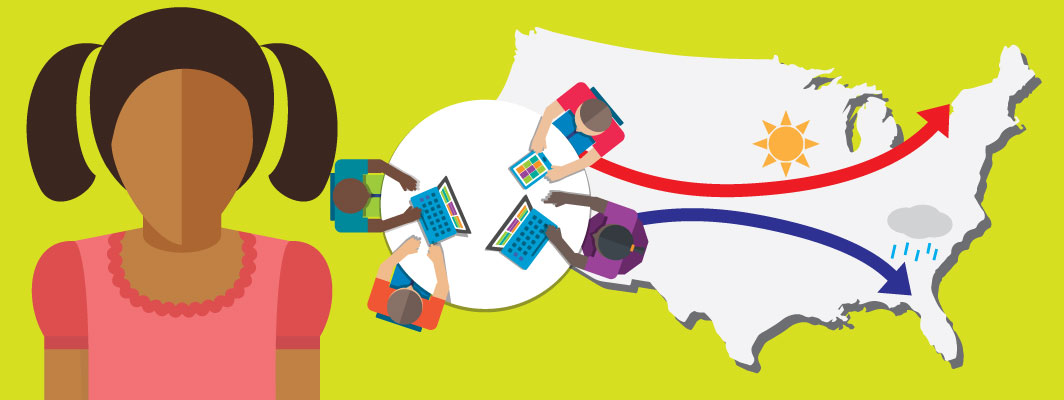
At DeWitt Perry Middle School in Texas, language arts students collaborated on a WebQuest to find an “iconic” image from their lifetime and reflect on its meaning. And at Landrum Middle School in South Carolina, software allowed students to be assessed based on the accuracy of their music performance, encouraging them to improve their score each time they played the piece.
These schools were among 50 underserved middle schools around the country that benefited from an digital learning coach during the pilot year of Digital Promise’s Dynamic Learning Project (DLP), with generous support from Google. Through instructional coaching, the DLP aims to increase powerful and impactful use of technology and improve educational equity.
Throughout the 2017-18 school year, DLP coaches worked with teachers to help them tackle classroom challenges by brainstorming innovative, technology-based strategies and providing personalized classroom support to the teacher throughout the implementation process.
As powerful use of technology increased, student engagement grew as well. After the first year of the DLP, students reported using technology more often for working with their classmates, solving problems and keeping track of their own work.
“[The students] have ownership of what they’re doing and what they’re learning, instead of me just handing them things like, ‘OK. Do this,’” said one DLP teacher. “They’ve created things that they can share with each other, and (…) [they] have gotten better about finding specific [elements] to provide feedback on, instead of just saying, ‘This is awesome.’”
In one science classroom in a high-poverty middle school in Pennsylvania, it was clear that more powerful use of technology led to increased student engagement and, as a result, a more orderly classroom. At the beginning of the school year, students frequently misbehaved, interrupting class and visibly frustrating their teacher. The teacher worked with her coach to develop a more productive environment where students worked independently on their tablets while the teacher provided individualized support to students. However, while a more positive, encouraging classroom had been created and students were better behaved, they still did not have opportunities to collaborate, think critically, or be creative.
By the spring, however, it was as if it were an entirely different classroom. Students entered with a smile and immediately sat down and began working on a warm-up activity, either using a learning app to review parts of a cell, read a science book, or enrich their knowledge of cells using other learning software. During a video about bacteria, students were completely engaged as they took notes on their tablets, and were eager to share what they learned when prompted by their teacher. Then, in pairs, students completed a pre-lab to prepare for what they would see under the microscope in the next day’s lab, for which they were visibly excited.
Over the course of the school year, the teacher and coach worked together to develop strategies to foster student engagement and learning, and to provide opportunities for student collaboration and critical thinking. Through coaching, the teacher had transformed her teaching philosophy and instructional design to incorporate powerful technology use, which enabled her to better manage her class so that deeper learning could happen.
DLP teachers, coaches, and principals all believed that coaching improved student learning and engagement; in fact, more than 95 percent of coaches and nearly 90 percent of principals and teachers believed that the DLP advances student engagement.
“Technology allows teachers to build and change their relationships with students,” said Dan Kinkade, DeWitt Perry’s technology coach. “It allows students more voice and (helps them feel) empowered, while teachers become facilitators in a student-centered classroom.
“Students are taking charge of their own learning, and it’s transformational.”